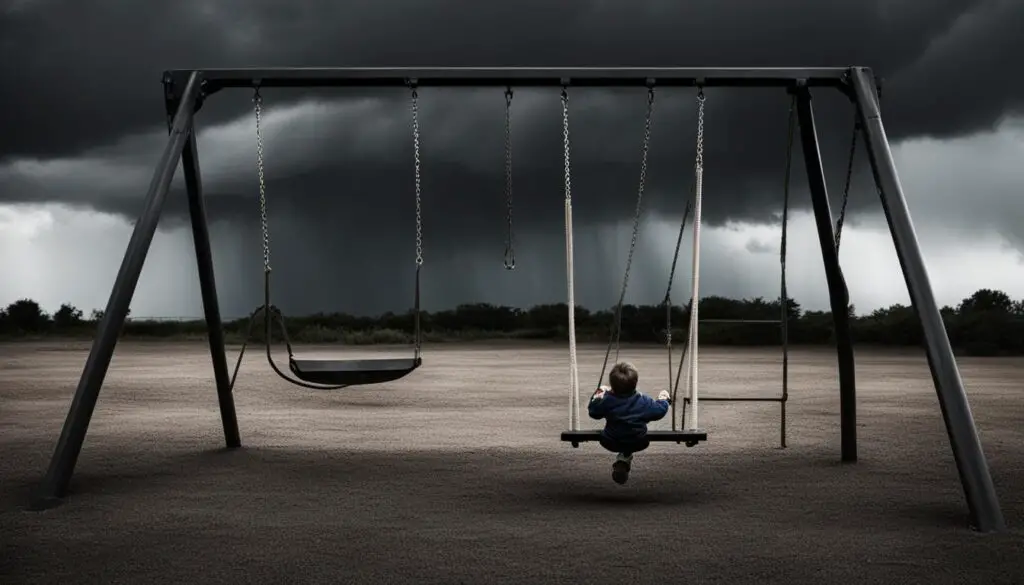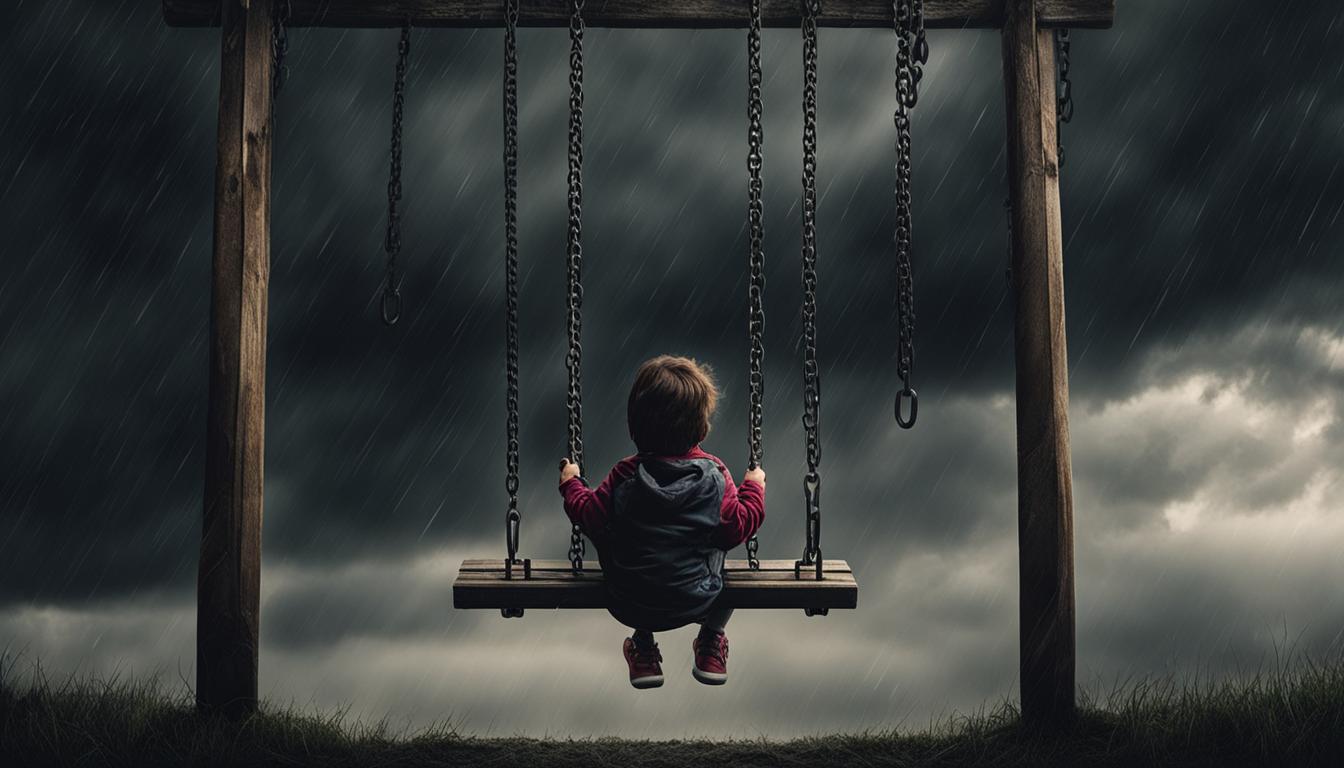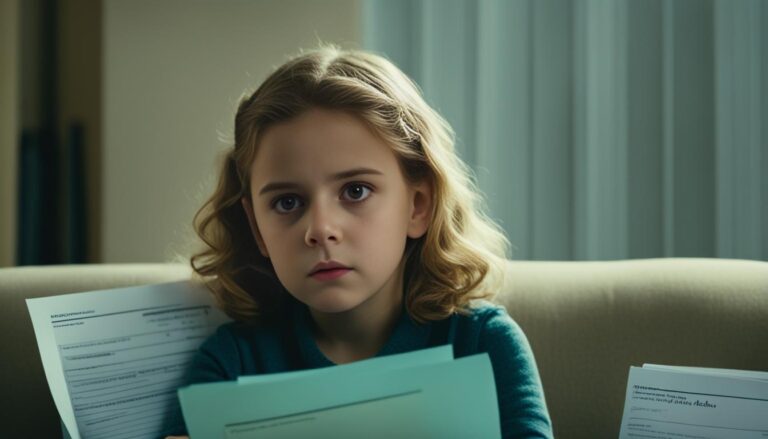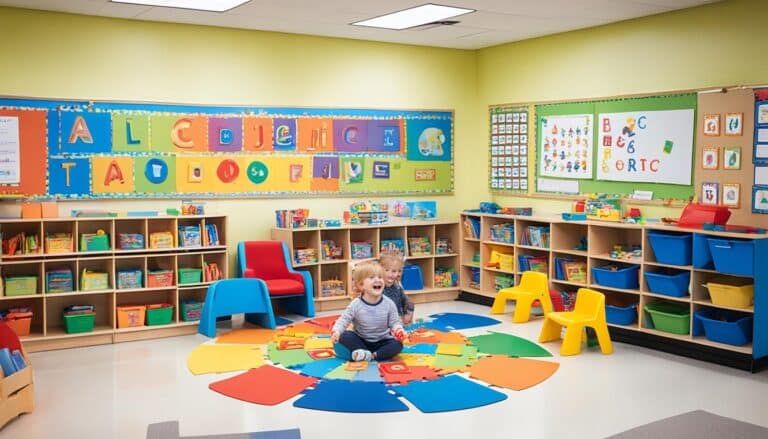Understanding Childhood Anxiety and Depression
As a parent, caregiver, or educator, it is important to have a deep understanding of childhood anxiety and depression. These mental health disorders can have a profound impact on children’s lives, affecting their emotional well-being, relationships, and overall development. By recognizing the signs and symptoms of childhood anxiety and depression, we can provide the necessary support and early intervention to help our young ones thrive.
Childhood anxiety and depression are more common than we may think. Research shows that approximately 10-20% of children and adolescents experience symptoms of these disorders. This means that many children may be silently struggling, and it is our responsibility to create a safe space for them to express their emotions and seek help when needed.
Anxiety in children can manifest in various ways, often leading to excessive worry, fearfulness, restlessness, and difficulty concentrating. Physical symptoms, such as headaches or stomachaches, may also be present. On the other hand, childhood depression may show signs such as persistent sadness, lack of interest in activities, changes in appetite or sleep patterns, and even thoughts of self-harm or suicide.
Understanding mental health in children means recognizing the risk factors and causes that can contribute to the development of anxiety and depression. Many factors such as genetic predisposition, family history, traumatic experiences, chronic stress, and environmental factors can play a role. By identifying these factors, we can intervene early and provide the necessary support to minimize the impact on children’s lives.
Key Takeaways:
- Childhood anxiety and depression are prevalent mental health disorders affecting 10-20% of children and adolescents.
- Anxiety in children may present as excessive worry, fearfulness, restlessness, and physical symptoms.
- Childhood depression can manifest as persistent sadness, lack of interest, changes in appetite or sleep, and thoughts of self-harm or suicide.
- Understanding the risk factors and causes of childhood anxiety and depression is essential for early identification and intervention.
- Providing a supportive environment and seeking professional help are crucial in supporting children’s mental health and well-being.
Recognizing the Signs of Childhood Anxiety
Childhood anxiety can present in various ways, and it’s crucial to be able to identify the signs and symptoms. Understanding the indicators of anxiety in children can help parents, caregivers, and educators provide the necessary support and early intervention. Recognizing anxiety disorders in children, such as generalized anxiety disorder and separation anxiety disorder, is also important for appropriate management.
Common Signs of Anxiety in Children:
- Excessive worry: Children with anxiety may often worry excessively about everyday things, even when there is no apparent reason for concern.
- Fearfulness: They may display heightened fear or become excessively scared in certain situations or when faced with specific triggers.
- Restlessness: Children with anxiety may exhibit restlessness or have difficulty sitting still for extended periods.
- Difficulty concentrating: Anxiety can make it challenging for children to concentrate and focus on tasks, leading to academic difficulties.
- Irritability: Anxiety can manifest as increased irritability, making children easily agitated or prone to outbursts of anger.
- Physical symptoms: Children with anxiety may experience physical symptoms such as headaches, stomachaches, muscle tension, or fatigue.
“Recognizing signs of anxiety in children is vital for early intervention and appropriate support. By understanding the common indicators, we can empower children to manage their anxiety and lead happier, more fulfilling lives.” – Dr. Sarah Thompson, Child Psychologist
It is essential to remember that each child is unique, and anxiety symptoms can vary. While the presence of these signs does not necessarily mean a child has an anxiety disorder, it is advisable to seek professional guidance if concerns persist or significantly impact their daily functioning.
Now, let’s take a closer look at the symptoms of childhood depression in Section 3.
*Please note that the image is for illustrative purposes only and does not directly represent specific signs of anxiety in children.*
Identifying the Symptoms of Childhood Depression
Childhood depression presents itself differently from adult depression. Recognizing the symptoms is essential for early intervention and addressing childhood depressive disorders.
Symptoms of Childhood Depression:
- Persistent sadness
- Lack of interest in activities
- Changes in appetite or sleep patterns
- Feelings of guilt or worthlessness
- Thoughts of self-harm or suicide
When a child experiences these symptoms, it is crucial to seek appropriate professional help. Addressing childhood depression promptly can provide the necessary support and improve overall well-being.
Understanding Childhood Depressive Disorders
Childhood depressive disorders encompass a range of conditions that affect a child’s mental and emotional well-being. These disorders can impact their daily functioning, relationships, and overall quality of life. Early identification and intervention are vital for guiding children through their struggles and helping them thrive.
Risk Factors and Causes of Childhood Anxiety and Depression
Childhood anxiety and depression are complex mental health disorders that can be influenced by various risk factors and causes. Understanding these factors is crucial in identifying and addressing these conditions in children.
Risk Factors for Childhood Anxiety and Depression
Several risk factors increase the likelihood of a child developing anxiety or depression:
- Genetic Predisposition: A family history of anxiety or depression can increase a child’s susceptibility to developing these disorders.
- Traumatic Experiences: Childhood trauma, such as physical or emotional abuse, neglect, or witnessing violence, can contribute to the development of anxiety and depression.
- Chronic Stress: Persistent stressors, such as family conflicts, school pressures, or socioeconomic challenges, can increase a child’s vulnerability to mental health disorders.
- Environmental Factors: Factors such as a chaotic home environment, unstable family relationships, or exposure to substance abuse can impact a child’s mental well-being.
Causes of Childhood Anxiety and Depression
The causes of childhood anxiety and depression are multifaceted and can involve a combination of biological, psychological, and environmental factors:
- Neurochemical Imbalance: Imbalances in brain chemicals, such as serotonin and dopamine, can contribute to the development of anxiety and depression in children.
- Cognitive Factors: Negative thinking patterns, low self-esteem, and difficulties in coping with stress can contribute to the onset and persistence of anxiety and depression.
- Family Dynamics: Issues within the family, such as parental conflict, lack of emotional support, or inconsistent discipline, can significantly impact a child’s mental health.
- Social Factors: Peer pressure, bullying, social isolation, or difficulties in forming and maintaining relationships can contribute to the development of anxiety and depression.
Understanding the risk factors and causes of childhood anxiety and depression is essential for early identification and intervention. By addressing these factors, we can support children’s mental health and help them lead healthier, happier lives.
To gain a deeper understanding, let’s take a closer look at the impact of childhood anxiety and depression on a child’s daily functioning.

IMAGE: This image visually represents the various risk factors and causes associated with childhood anxiety and depression. It illustrates the interconnectedness and complexity of these factors, highlighting the importance of understanding them in providing appropriate support to children.
Impact of Childhood Anxiety and Depression on Daily Functioning
Childhood anxiety and depression can have profound effects on a child’s daily functioning and overall well-being. These mental health disorders not only impact their emotional state but also hinder their ability to perform academically, engage in social interactions, and develop vital skills for a fulfilling life.
Children experiencing anxiety often struggle with concentration, leading to difficulties in learning and retaining information. Their excessive worry and fear can make it challenging to focus on tasks and can lead to decreased academic performance. Additionally, anxiety may manifest as physical symptoms such as headaches or stomachaches, further affecting their ability to engage fully in their daily activities.
Similarly, childhood depression can significantly affect a child’s social interactions. They may experience feelings of sadness, withdrawal, and a lack of interest in activities they once enjoyed. Children with depression may isolate themselves from peers, leading to reduced opportunities for social connection and support. This emotional withdrawal can further hinder their emotional development and ability to build and maintain healthy relationships.
The consequences of childhood anxiety and depression extend beyond the immediate impact on a child’s daily functioning. They can have lasting effects on a child’s long-term well-being, including an increased risk of developing mental health disorders in adolescence and adulthood.
It is crucial to address the effects of childhood anxiety and depression early on to ensure that children receive the support they need. By providing appropriate interventions and treatments, such as therapy and parental support, we can help children navigate these challenges and cultivate resilience for a healthier and more fulfilling future.

Addressing childhood anxiety and depression not only improves the well-being of individual children but also contributes to building a mentally healthier society. By prioritizing the mental health of our young ones, we empower them to lead fulfilling lives and contribute positively to their communities.
Treatment Options for Childhood Anxiety and Depression
When it comes to treating childhood anxiety and depression, there are several options available that can help children manage their symptoms and improve their overall well-being. It’s essential to remember that every child is unique, so the treatment approach may vary depending on their specific needs and circumstances. Here are some common treatment options that can be effective in addressing childhood anxiety and depression:
Therapy
Therapy is an essential component of the treatment for childhood anxiety and depression. Cognitive-behavioral therapy (CBT) is a widely recognized and research-supported therapy approach that helps children identify and change negative thoughts and behaviors. CBT equips children with coping strategies and skills to manage anxiety and depressive symptoms effectively.
Play therapy is another approach that is particularly useful for younger children. Play therapy allows children to express their thoughts, feelings, and experiences through play, enabling therapists to identify and address underlying emotional challenges.
Medication
In some cases, medication may be prescribed to children with severe or persistent anxiety or depression. Antidepressant medications, such as selective serotonin reuptake inhibitors (SSRIs), may be used to regulate brain chemistry and alleviate symptoms. It’s important to note that medication should always be prescribed and monitored by a qualified healthcare professional.
Parental Support and Education
Parents play a crucial role in supporting their children’s mental health. Providing a nurturing and understanding environment can make a significant difference in a child’s recovery. Educating parents about childhood anxiety and depression, their treatment options, and how they can support their children at home can help create a strong support system.
Additionally, parental involvement in therapy sessions can enhance the effectiveness of treatment. Collaborating with therapists allows parents to learn techniques and strategies to support their child’s progress outside of therapy sessions.
Early Intervention and Comprehensive Approach
Early intervention is key in addressing childhood anxiety and depression. Detecting and addressing symptoms early can prevent the escalation of mental health difficulties and promote better long-term outcomes. A comprehensive approach that combines various treatment modalities, including therapy, medication (when necessary), and parental support, can ensure that all aspects of a child’s mental health are addressed effectively.
Remember that every child’s journey toward recovery will be unique. It’s crucial to work closely with healthcare professionals to determine the best treatment plan for your child. With the right support and intervention, children can learn to manage their anxiety and depression, develop effective coping skills, and thrive.
img {
display: block;
margin-left: auto;
margin-right: auto;
margin-top: 20px;
width: 50%;
}
Building Resilience in Children
Promoting resilience in children is essential to help prevent or mitigate the impact of anxiety and depression. By building resilience, we can empower children to navigate challenges and develop strong mental health. Here are some effective strategies for fostering resilience in kids:
Nurturing and Supportive Environment
Creating a nurturing and supportive environment is crucial for building resilience in children. This includes providing a stable and loving home, establishing consistent routines, and fostering positive relationships. When children feel safe and supported, they are better equipped to cope with stressors and adversity.
Teaching Coping Skills and Emotional Regulation
Equipping children with coping skills and strategies for emotional regulation is an important part of building resilience. By teaching them how to identify and manage their emotions, we empower them to navigate challenging situations more effectively. This can include techniques such as deep breathing exercises, journaling, or engaging in hobbies that bring them joy and relaxation.
Promoting Healthy Lifestyle Habits
Healthy lifestyle habits play a significant role in fostering resilience in children. Regular physical activity, nutritious diet, and adequate sleep contribute to overall well-being and mental health. Encouraging children to engage in activities they enjoy, prioritize self-care, and maintain a balanced lifestyle can support their resilience-building journey.
Fostering Social Connections
Social connections are crucial for children’s resilience. Encourage children to cultivate meaningful relationships with peers, family members, and mentors. This can be achieved through participation in extracurricular activities, joining clubs or organizations, or engaging in community service. Social support networks provide a sense of belonging and help children develop important social skills.
“Resilience is not about being untouched by adversity, but rather about bouncing back stronger after facing challenges.”
Building resilience in children requires consistent effort and support from parents, caregivers, and educators. By promoting a nurturing environment, teaching coping skills, encouraging healthy habits, and fostering social connections, we can empower children to thrive and develop strong mental health.
Conclusion
Understanding childhood anxiety and depression is of utmost importance for parents, caregivers, and educators. By recognizing the signs and symptoms and taking appropriate action, we can support children’s mental health and overall well-being. Early intervention plays a vital role in providing the necessary support and ensuring positive outcomes for children facing anxiety and depression.
It is crucial to prioritize the mental health of our young ones and create a supportive environment for their growth and development. By seeking professional help and implementing interventions tailored to their needs, we can help children navigate these challenges and build resilience.
Supporting children’s mental health involves a comprehensive approach that includes education, therapy, and parental involvement. By understanding the impact of childhood anxiety and depression on daily functioning, we can take steps to enhance their academic performance, social interactions, and emotional development. Together, let’s work towards supporting our children’s mental health, fostering understanding, and promoting early intervention to ensure a brighter future.
FAQ
What are the signs of anxiety in children?
The signs of anxiety in children may include excessive worry, fearfulness, restlessness, difficulty concentrating, irritability, and physical symptoms such as headaches or stomachaches. Anxiety disorders in children, such as generalized anxiety disorder and separation anxiety disorder, may also present with specific symptoms and behavioral changes.
How does childhood depression differ from adult depression?
Childhood depression often presents differently than adult depression. Symptoms may include persistent sadness, lack of interest in activities, changes in appetite or sleep patterns, feelings of guilt or worthlessness, and thoughts of self-harm or suicide. It is crucial to identify these symptoms early on and seek appropriate professional help to address childhood depressive disorders.
What are the risk factors for childhood anxiety and depression?
Various factors can contribute to the development of childhood anxiety and depression. These may include genetic predisposition, family history of mental health disorders, traumatic experiences, chronic stress, and environmental factors. Understanding these risk factors can help in early identification and intervention strategies.
How does childhood anxiety and depression impact daily functioning?
Childhood anxiety and depression can significantly impact a child’s daily functioning and overall well-being. These mental health disorders can interfere with academic performance, social interactions, and emotional development. It is crucial to address these issues to help children lead fulfilling and healthy lives.
What are the treatment options for childhood anxiety and depression?
There are various treatment options available for childhood anxiety and depression. These may include therapy, such as cognitive-behavioral therapy and play therapy, medication (in certain cases), and parental support and education. Early intervention and a comprehensive approach to treatment are crucial for the effective management of mental health disorders in children.
How can resilience be built in children?
Promoting resilience in children can help prevent or mitigate the impact of anxiety and depression. Building resilience involves providing a supportive and nurturing environment, teaching coping skills and emotional regulation, promoting healthy lifestyle habits, and fostering social connections. These strategies can enhance a child’s ability to navigate challenges and develop strong mental health.
Why is it important to understand childhood anxiety and depression?
Understanding childhood anxiety and depression is crucial for parents, caregivers, and educators. By recognizing the signs, seeking professional help, and implementing appropriate interventions, we can support children’s mental health and well-being. Early intervention is key in providing the necessary support and ensuring positive outcomes for children facing anxiety and depression. Let’s prioritize the mental health of our young ones and create a supportive environment for their growth and development.
Source Links
- https://www.studocu.com/en-us/document/middle-georgia-state-university/introduction-to-psychology/psy245-ch-8-emotional-social-dev-in-early-childhood/81590044
- https://www.psychologytoday.com/us/therapists/pa/warwick?category=anxiety
- https://www.920wmok.com/2024/01/16/illinois-mandates-mental-health-screenings-of-students-starting-this-fall/






